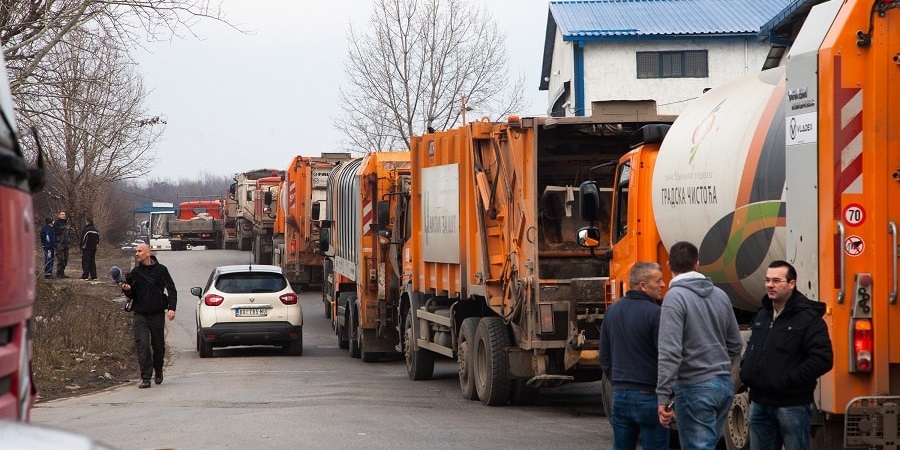The Serbian Ministry of Environment recently published the environmental assessment for the planned Vinča waste incinerator for public consultation. But the study shows no sign that the new plant would be in line with new EU pollution control standards approved in June.
Ne da(vi)mo Beograd, Serbia | 22 July 2019

On 28 June the Serbian Ministry of Environment published two environmental assessments: for the planned municipal waste incinerator and landfill gas plant at Vinča, just outside Belgrade, and for a new waste landfill next to the existing one at the same site.
Nothing unusual about that, except that the EBRD had already published an environmental assessment on its website last November which encompassed all these project elements in one. Ne Da(vi)mo Beograd and Bankwatch submitted 92 pages of comments to the bank in December, and in May received a response with the project promoter’s answers.
Expecting our comments to have been addressed in the new version of the studies, we were surprised to find that they repeat many of the same deficiencies that we pointed out in our comments submitted in December.
The main issue is that no-one has yet come up with any numbers to prove that the incinerator will be compatible with waste prevention and separate collection schemes. These will not only be obligatory for Serbia in the next few years as it advances towards EU membership, but also highly beneficial in terms of protecting public health and saving energy and resources.
It still looks to us like the incinerator will crowd out resources for prevention and recycling and will depend on a large increase in Belgrade’s waste generation which, if it implements EU circular economy policies, may never arise.
But one important thing has changed since our last round of comments in December. On 17 June new pollution control standards called the Waste Incineration Best Available Techniques (BAT) Conclusions were approved in the EU. The Conclusions will immediately be binding for plants permitted after they are published in the EU Official Journal in the coming months.
No-one can say they did not see this coming. The need to develop new BAT Conclusions was stated already in the 2010 Industrial Emissions Directive and drafts of the new rules have been available for two years already. Yet so far, the project promoter and the EBRD have failed to ensure that the project complies with the new rules.
If the Vinča plant goes ahead, it will receive its integrated permit well after the publication of the new standards. While Serbian legislation is unclear on the extent to which these are binding, the EBRD’s Environmental and Social Policy is not. Its requirements on industrial pollution state that: “Certain projects that, due to their nature and scale, would be subject to the EU Industrial Emissions Directive will be required to meet EU Best Available Techniques (BAT) and related emission and discharge standards, regardless of location.”
Irrespective of the rules, failure to apply the latest standards raises the question of why the public in Belgrade is not deserving of the same level of environmental protection as EU citizens. Any government that cares about its citizens cannot permit the construction of a new incinerator that does not afford maximum protection for public health.
Never miss an update
We expose the risks of international public finance and bring critical updates from the ground – straight to your inbox.
Institution: EBRD | EIB
Location: Serbia
Project: Belgrade incinerator PPP
Tags: recycling | waste incineration
